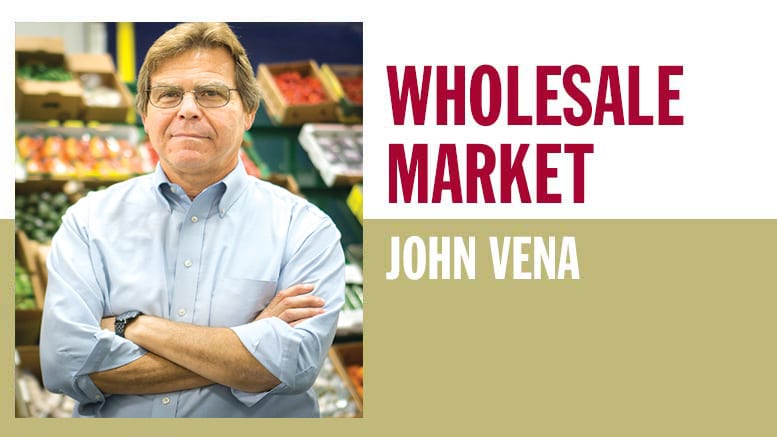Transportation and Produce Supply Chain Uncertainty
June 20, 2022 | 4 min to read
Current transportation challenges are severely testing the resiliency of the produce industry, exacerbated by a shortage of drivers and increased logistics costs. Sea shipments face unprecedented issues, including container shortages and port congestion. The pandemic has also limited air transport availability, driving up rates despite increased flights. Additionally, the ongoing war in Ukraine complicates air transport further. This environment of uncertainty and rising expenses creates significant difficulties for fresh produce distribution and customer communication.

Originally printed in the May 2022 issue of Produce Business.
Paul Revere was worried only about Land and Sea. Today, our transportation troubles include Air as well.
Current transportation and supply chain woes are testing the resiliency so frequently attributed to the produce industry. For many of us, the increased cost of sea and air transportation is easily measured in the number of air pallets and sea containers we could not load in the last 12 months. The cost of logistics simply outweighed the market price for many items. In addition, the lack of transparency of schedule changes and additional fees compound the uncertainty surrounding cost management.
A shortage of available drivers is fueling rate increases in domestic trucking. The current low population of trained drivers for over-the-road and local hauling isn’t so surprising. In 2018, according to the Bureau of Labor Statistics, the average age of U.S. drivers was 55. As the pandemic spread, many older workers, including drivers, left the workforce.
Recently, however, judging by the number of trucking companies and truck brokers working hard via email blasts and LinkedIn messaging, it seems competition is growing. Perhaps higher rates in our industry are drawing some players that have not typically hauled fresh produce? Perhaps truckers have to work harder to fill their trucks as product supply and demand levels fluctuate from day to day? Perhaps, as a result, we will develop new options and be able to negotiate better rates on some routes? But for now, we have limited pallet spaces on trucks, and higher costs of delivery and uncertainty.
Our company has been importing produce by sea for over 35 years. I always found the process fairly reliable, somewhat predictable and reasonably priced. Goods were ordered, containers stuffed and loaded onto ships — there wasn’t much drama. Winter weather was tough on that rhythm, but it was seasonal and expected. Then came the coronavirus pandemic and things changed.
For sea shipments, 2020 was difficult, 2021 was more difficult, but 2022 has been the most difficult year for a few important reasons. There is a shortage of containers in some ports, a glut in others. This year, bookings have been canceled and postponed more frequently than ever. Ports are so congested, a vessel’s ETA is often just a suggestion. Container discharge dates and product inspection appointments are often wishful thinking. Port truckers are stressed and understaffed and often unable to pull containers when they are finally released. There is a lot of frustration, followed by uncertainty.
From the mid-1980s until early 2020, the worst “supply chain” concern we faced in air transportation was a shortage of space around the holidays, typically due to the extra volume of cut flowers from Holland, Israel or Colombia or wine from France. Beaujolais Nouveau, a traditional “new” red wine, is released for sale on the third Thursday of November and often crowds out produce shipments for Thanksgiving. Flower-centric holidays like Valentine’s Day and Mother’s Day are especially hard on produce importers. This year, in the week before Mother’s Day, space for produce from Colombia was nonexistent.
Pandemic-induced travel restrictions reduced the amount of available airspace to a fraction of what it had been. Of course, demand for many of the items flown in was also reduced, so the lack of available space sort of balanced things out. As the world re-opens, increased flights are creating more airspace. Unfortunately, rates remain high, and we have found, as have many travelers, the flight schedule is not always as listed on your travel or freight documents.
Transportation and supply chain woes are testing the resiliency so frequently attributed to the produce industry.
In addition, the war in Ukraine has increased the stress on air transport globally, as schedules and available equipment are shifted to maintain safe air corridors. This results in limited air space, high rates and still more uncertainty.
U.S. ground transportation rates will likely remain high for a couple of reasons, not just a driver shortage. The pandemic damage to the supply chain for durable goods such as trucks, trailers, reefer equipment and the parts and tools to repair them is in terrible shape. The lead time for all these goods is long and unpredictable.
The effects of the pandemic on sea shipping has drawn the attention of everyone from The Federal Maritime Commission to President Joe Biden, Congress and our own industry trade associations. Some might say this attention is too little and too late. Besides the uncertainty of transit times, there appears to be a whole new crop of “extra” charges appearing on sea freight contracts and invoices.
Fresh produce shipped by air typically travels on passenger flights. Space for air cargo is in direct relationship to the number of annual flights. The number of pre-Covid commercial flights in 2020, was on track to exceed 40 million. In 2021, that number dropped to less than half.
Our options are limited. Explaining these gaps in supply to customers is difficult. Pass the resiliency.

John Vena III is president of John Vena Inc., a specialty produce distributor on the Philadelphia Wholesale Produce Market that celebrated its 100th anniversary in 2019.
4 of 12 article in Produce Business June 2022

